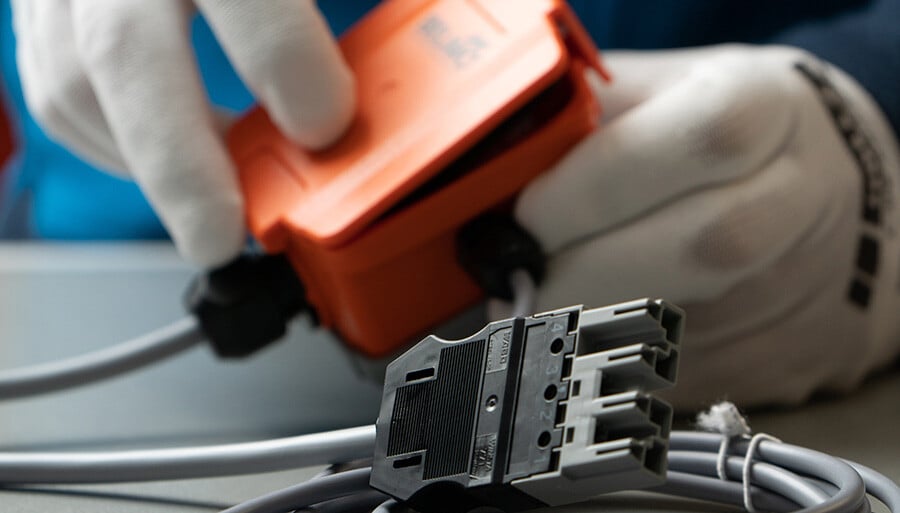Why Plenum-Rated PVC Cable Temperature Averaging Sensors Outperform Copper Averaging Sensors in HVAC Systems
When it comes to HVAC sensors, the choice of materials can significantly impact performance, durability, and cost. An ongoing debate in the industry centers on using plenum-rated PVC cable temperature averaging sensors versus copper averaging sensors. As technology and HVAC systems evolve, plenum-rated PVC cable sensors have emerged as the superior choice. In this blog, we'll explore why plenum-rated sensors outperform copper sensors in several critical areas, and how switching to them can benefit your HVAC systems.
1. Durability and Longevity
Plenum-rated PVC sensors are highly resistant to corrosion and oxidation, making them durable in a variety of environmental conditions. While copper is an excellent conductor, it can be prone to kinking during installation, which compromises its integrity. Also, in harsh environments, copper is susceptible to degradation due to moisture and chemical exposure. While copper’s antimicrobial properties may offer an initial advantage, factors like kinking, moisture exposure, and other environmental stresses can diminish its effectiveness. Plenum-rated PVC sensors, on the other hand, maintain their integrity over time, offering a longer lasting, more reliable solution.
2. Lightweight Design for Easier Handling
Plenum-rated PVC sensors are made from lightweight plastic, making them significantly easier to handle and install than copper sensors. The lighter weight reduces shipping costs and installation time, as contractors can move and place the sensors more easily. This flexibility allows for faster project completion and less physical strain on installers.
3. Enhanced Safety and Compliance
Safety is paramount in HVAC installations, especially in building plenums where strict fire and safety codes apply. Plenum-rated materials meet these stringent standards, ensuring safe installation in areas where fire resistance is essential. While copper is effective in many scenarios, it doesn't offer the same fire safety assurance as plenum-rated PVC materials.
4. Lower Environmental Impact
Sustainability is increasingly a priority in construction and technology. The production of plenum-rated PVC sensors has a much smaller environmental footprint compared to copper, which requires energy-intensive mining and processing with substantial ecological impacts. Choosing plenum-rated PVC sensors is a more environmentally responsible option.
5. Superior Electrical Insulation
Plenum-rated PVC is a natural insulator, reducing the risk of electrical interference or short circuits during installation. This enhances overall system safety. In contrast, copper requires additional insulation to prevent such issues, adding complexity and cost to installations.
6. Reduced Risk of Theft
Copper components are often targeted for theft due to their high resale value. Using plenum-rated PVC sensors eliminates this risk, protecting your investment and preventing job site thefts.
7. Versatility in Design and Application
Plenum-rated PVC sensors offer more flexibility in design, allowing them to be customized for specific HVAC applications. In contrast, rigid copper sensors may struggle in tight or complex spaces. The customizable lengths and configurations of PVC sensors make them more adaptable for a variety of installations.

8. Improved Temperature Sensing
For HVAC applications, accurate temperature sensing is crucial. Plenum-rated PVC sensors, especially those with visible beads in non-continuous designs, provide more precise measurements by exposing sensing elements directly to the air. This improves data accuracy and overall system performance. Additionally, we also offer RTD TRUE Duct Averaging Sensors, which feature a continuous wire/element that measures the average temperature across the entire length of the probe, ensuring even more consistent and reliable temperature readings.
9. Cost-Effective Maintenance and Stability
Plenum-rated PVC sensors are robust and durable, requiring less maintenance compared to copper sensors, which can degrade over time. This results in lower long-term costs and fewer system disruptions. Additionally, plenum-rated PVC sensors are not subject to fluctuations in the copper market, ensuring more stable and predictable pricing.
10. Faster, More Efficient Installation
The flexibility of plenum-rated PVC sensors allows for quicker installation than rigid copper sensors. This flexibility enables them to navigate through crowded spaces more easily, reducing both installation time and labor costs. Faster installations keep projects on schedule and within budget. Additionally, NTC duct averaging sensors, which have multiple sensors arranged in series/parallel, offer an advantage over copper averaging sensors because with copper sensors, you cannot see where the individual sensors are located within the probe. However, with plenum flexible averaging sensors, the sensor positions are visible, allowing for optimal stratification and best practice installation/positioning.
11. Non-Conductive Material for Enhanced Safety
As a non-conductive material, plenum-rated PVC eliminates the risk of creating unintended electrical pathways, further enhancing the safety of the overall system. This is especially beneficial in sensitive environments where electrical safety is a priority.
12. Retrofit
Replacing copper averaging sensors can be more challenging compared to plenum-rated PVC sensors due to the rigid installation of copper sensors inside the duct. Removing copper sensors for retrofitting can cause additional complications, while the flexibility of PVC sensors allows for easier removal and replacement, reducing time and labor costs during upgrades or maintenance.
Conclusion
When comparing HVAC sensors, plenum-rated PVC cable temperature averaging sensors offer distinct advantages over traditional copper sensors. They are more durable, safer, and environmentally friendly, making them the superior choice for modern HVAC systems. Belimo offers these sensors in both continuous and non-continuous versions, available in lengths of 10, 20, and 50 feet. By switching to plenum-rated PVC sensors, you're not only investing in better technology but also ensuring the long-term success and efficiency of your HVAC installations.

